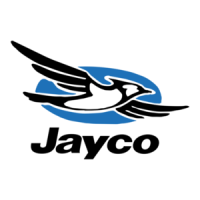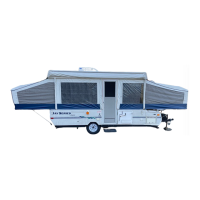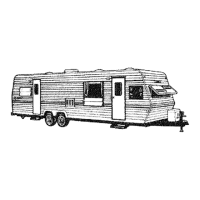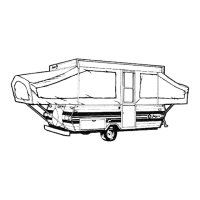101
tally exhausted. Using one cylinder until it is empty and then using the second cylinder will
allow you to ll the empty cylinder at your convenience without running out of propane.
Unlike homes, the amount of oxygen supply
is limited due to the size of the recreation ve-
hicle. Proper ventilation when using the cook-
ing appliance(s) will help avoid the danger of
asphyxiation.
These warning labels are lo-
cated in the cooking area to
remind the user to provide an
adequate supply of fresh air
for combustion.
Most RV gas appliances are operated intermittently, and each has a dierent BTU rating.
You will need to consider this when planning your propane supply and consumption. Un-
less there is heavy use of hot water, the water heater consumption of propane is minimal.
During cool temperature or high wind conditions, furnace consumption can be extremely
high.
To calculate your propane supply, take the BTU ratings for your propane appliances and
divide that into the BTU availability. Each gallon of propane gas (3.785 liters) produces
about 91,500 BTU’s (96,528 kilojoules) of heat energy.
The following chart provides average propane consumption information.
Do not turn gas range burner controls to ON and allow gas to escape
before lighting.
Do not use portable fuel burning equipment (i.e., wood and charcoal
grills or stoves) inside the recreation vehicle.

